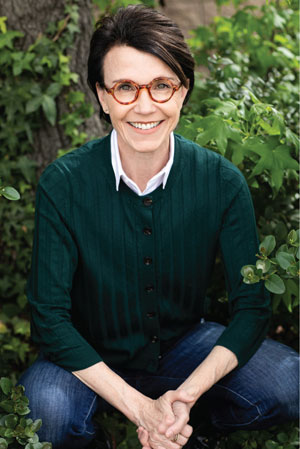From 'Zoobiquity' to 'Wildhood'

Many humans don't realize just how much they have in common with other animal species—everything from monkeys to gazelles to even guppies.
Barbara Natterson-Horowitz, MD, a cardiologist in human medicine, explored some of the many connections between human and animal health in her 2012 bestselling book "Zoobiquity," written with science journalist Kathryn Bowers.
The co-authors have spent the past five years examining the universal challenges of adolescence across the animal kingdom. Their new book, "Wildhood," which will be published in September, makes the case that understanding adolescence in wild animals is crucial to understanding the difficulties of growing up in a dangerous and changing world.
This August in Washington, D.C., Dr. Natterson-Horowitz delivered the keynote for AVMA Convention 2019, "Welcome to Wildhood: What Animal Adolescents Can Teach Us About Growing Up." Prior to the convention, she spoke with JAVMA News about her work. The following interview has been condensed and edited for clarity.
Q. How did the zoobiquity concept first come to you?
A. After 20 years of practicing cardiology as a professor at the University of California-Los Angeles, I got a call from a veterinarian at the Los Angeles Zoo asking me to help with an echocardiogram on one of their patients. Over the next several years, I participated in the care of many of the zoo's animals and went on to immerse myself in the world of veterinary medicine. What I learned from animal doctors transformed my approach to human medicine.
Q. How did you develop the zoobiquity concept?
A. I was introduced to a remarkable innovator and science writer, Kathryn Bowers. She saw how human medicine might be transformed by veterinary insights. The two of us set out to explore this. We coined the term "zoobiquity"—bringing together Greek and Latin root words to emphasize that we were bringing together different cultures—and wrote the book together.
As our worldview was being transformed by veterinarians, we discovered—to our disbelief—that there were no national conferences devoted to bringing leaders in human and veterinary medicine together to encourage collaborations. We decided to found the Zoobiquity Conference to do just that. We saw a huge opportunity to improve the health of all animals—humans and nonhuman animals—through collaboration between our fields, but the fields weren't intersecting enough for all of this potential to be realized.
Since 2011, the Zoobiquity Conference has been held around the country and world, and we are thrilled that the Nobel Foundation's Nobel Conference in September in Stockholm, Sweden, will focus on veterinary-human medical collaborations and feature a Zoobiquity Event.
Q. Why have you begun to focus on evolutionary biology?
A. Because the connection between human and animal medicine is fundamentally based on one thing: our shared animal ancestry. My research and teaching centers on finding and understanding the linkages between the health and physiology of a wide range of nonhuman animals in natural and domestic settings.
Q. What is a favorite example of an animal condition illuminating a human one or vice versa?
A. Because "Wildhood" focuses on animal adolescence, here is one of my recent favorites: Human adolescents tend to take more risks than mature adults. Sometimes they seem to even court danger. Wild animal adolescent species from fish to birds to mammals are known to sometimes approach rather than flee danger. This seemingly counterintuitive behavior is called predator inspection, and even though it is dangerous—sometimes the adolescent gazelles that approach cheetahs do get attacked—by learning about danger, they ultimately are safer as adults.
Q. What are some of the key takeaways from your new book, "Wildhood"?
A. The challenges faced by adolescent animals are essentially the same. All animals on the journey to adulthood must learn to be safe, learn to navigate social hierarchies, learn about sexuality, and learn self-reliance. Specific takeaways that fascinated me included:
- A disproportionate number of road-killed animals are inexperienced adolescents who are dispersing from their natal homes for the first time.
- Developmentally normal adolescent behavior by dogs and birds is not well tolerated by many pet owners. It was sad to learn that adolescence is a high-risk period for a dog to be relinquished to a shelter.
- It was fascinating to learn that adolescent animals that are competing to enter the adult hierarchies are sometimes given an assist by their parents. Mother hyenas and mongooses are notorious. This is called parental intervention—and reminds me a little of the current college admissions scandals.
Wild animal adolescents have a lot to teach us about growing up.